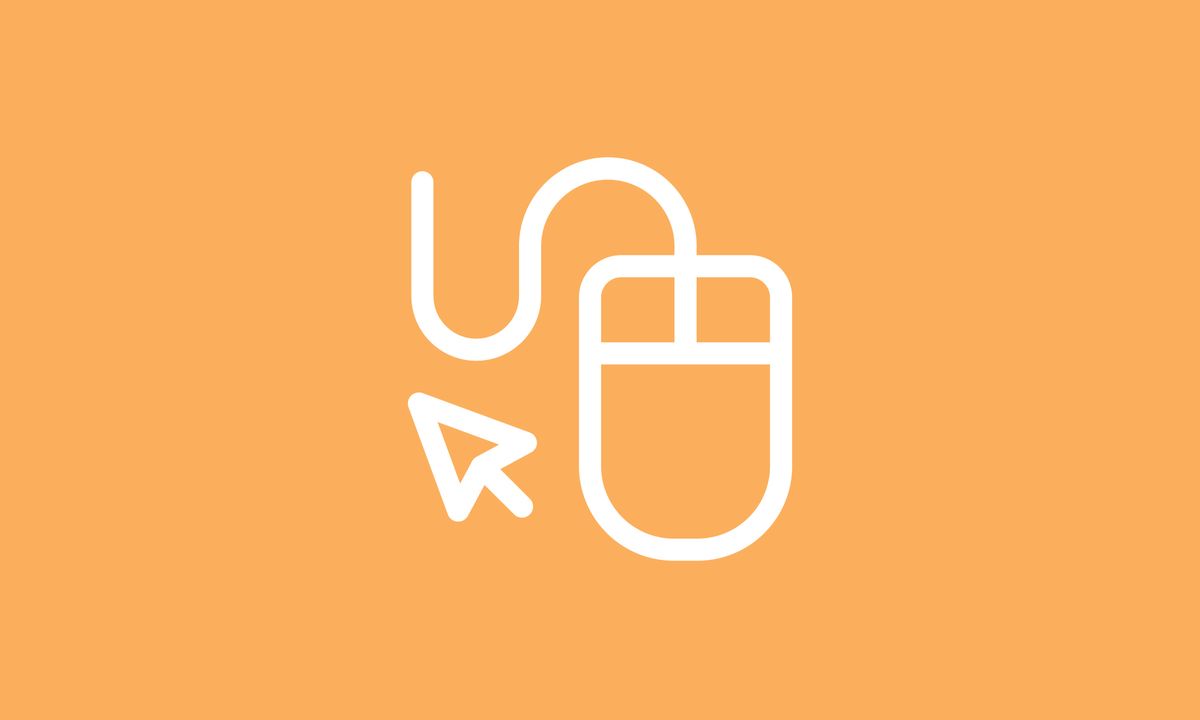If you're serious about getting meaningful results out of your content engagement initiatives, then use tried-and-tested strategies to bolster your content development efforts.
Are you getting very little to no content engagement?
You're not alone. Some brands waste precious marketing spend because they aren't giving their content strategy enough thought.
In their mad dash for relevance, they mass-produce bucketloads of content. Most of them are misguided by the outdated saying: "If you build it, they will come." Don't compromise your content marketing strategy because of bad advice like this.
That's not how content marketing works.
You need the right content strategy and execution if you want your target audience to come. It would help to let your audience know about the new content you're publishing.
You need a tried and tested content engagement strategy to build content that attracts and converts traffic.
Let me help.
What is content engagement?
Content engagement is an umbrella term under which user actions like clicks, comments, and shares fall.
It can happen anywhere—from your website to your social media profiles.
For example, if someone likes your post on LinkedIn, that's content engagement. And if someone clicks a CTA button on your blog to sign up for your newsletter, that's content engagement.
Why engaging your audience is important
Content engagement shows that you're reaping the rewards of your content marketing efforts. After all, user interactions could eventually lead your target audience towards sales.
Furthermore, it's a good indication that you're doing something right and your content resonates with your audience.
You can then build off of your results to improve your content strategy. Not to mention that it signals relevance to search engines and social media.
Content engagement metrics you need to track
You need to learn how to measure content engagement.
Like anything in the digital marketing space, you can measure content engagement by tracking the right metrics.
Here are some of the most essential content engagement metrics that every brand needs to track:
1. Unique pageviews
Unique pageviews is a metric that measures the number of times users accessed a page.
The metric doesn't count repeated views when users hit refresh or navigate in and out of the page. This paints a more accurate picture of just how many people actually saw your content within a given timeframe.
2. Session duration
Also known as "dwell time" or "time on page," session duration measures the number of time users spend on a page.
Analytics platforms usually measure this on an average basis. The longer your users stay on your page, the more captivated they likely are by your content.
3. Social referrals
Social referrals pertain to the number of users who visited your site from social media networks. This is a useful metric if you're trying to bring website traffic over from social media.
By tracking social referrals over time, you can gauge how effective your social media promotion tactics are.
4. Social media engagement
The social media engagement metrics you need to track vary slightly depending on the network you use.
For example, if you're running a Facebook page, you can track metrics like "post reach," "likes," and "tagged product clicks." But if you're managing a LinkedIn page, you can track some pretty advanced visitor demographics like "top job functions."
5. Pages per session
Pages per session measures the average number of pages users open in a single session.
This metric can be used to determine how motivated your audiences are to see more of your website. It's also tied to the effectiveness of your website's internal linking strategy and navigation elements.
6. Bounce rate
A "bounce" refers to single-page sessions wherein users leave without clicking anywhere on your page. On the other hand, the bounce rate measures how many bounces are happening.
If your bounce rate is high, chances are your content doesn't match their expectations in terms of quality and relevance. Although it is worth noting that if your content matches the visitor's intent, they might not need to visit other pages on your website, so your bounce rate on some pages will be higher than others.
7. Sessions per user
The number of sessions per user counts the times a single user has visited your site.
Sessions per user is calculated based on visits from both new and returning visitors.
Certain ways to engage your audience through content can leave strong impressions—compelling them to come back for more. This, in turn, will improve the sessions per user metric.
8. Scroll depth
Scroll depth is an advanced content engagement metric that measures how far users scroll through your pages.
You can track scroll depth on Google Analytics with the help of Google Tag Manager. During setup, you can define scroll thresholds to trigger custom events, which will be recorded on Google Analytics.
9. Conversion rate
Conversion rate is a broad metric that tracks specific user actions like subscriptions, visits to specific pages, or purchases.
This is a crucial metric to monitor. After all, the figures you see here tell you how effective your initiatives are in achieving your business goals.
Conversion rates can be tracked independently by form builders, eCommerce platforms, email marketing software, and other tools. You can also create custom conversion rate goals on Google Analytics.
How to keep your audience engaged
Understanding content engagement metrics alone won't help you win engagement points.
To learn how to keep your audience engaged, you first need to know your audience.
Who are they?
What are they trying to accomplish?
Most importantly, how can your content help them with their goals?
Being in tune with your audience's pain points enables you to develop an overarching content strategy with a higher probability of generating engagement. It allows you to identify content topics and keywords that address their pain points and pique their interest.
In addition, you should start focusing on engaging content types that will keep readers hungry for more.
Some examples include:
- "How-to" guides
- Video posts
- Presentations and slideshows
- Infographic posts
- Massive listicles
- Roundup posts
You can refer to my ultimate guide to content development for the steps in audience research and content ideation.
Once you get those things off your to-do list, it's time for some action.
1. Maximise content readability
Impacts:
- Bounce rate
- Session duration
- Pages per session
- Scroll depth
- Unique pageviews
- Conversion rate
It isn't rocket science: Huge chunks of texts with unreadable typography make for a terrible reading experience.
If you want to keep your audience engaged, you need to improve the readability of your content.
By the way, choosing a sans serif font and increasing your font sizes aren't enough. You also need to pay attention to your content's formatting and structure.
An easy tactic is to keep sentences within 20 words and paragraphs within 1-2 sentences.
It's also important to use lots of headings and subheadings, so readers know when a section ends and begins. Using this strategy improves the readability and scannability of your content.
You also need to know how to use various formatting options and paragraph styles. I'm talking about bullet points, bold, italics, and numbered lists.
2. Add a Table of Contents
Impacts:
- Bounce rate
- Scroll depth
- Session duration
Instant gratification—that's the name of the game.
Another reason why users won't engage with your content is it took them too long to find what they're looking for.
You can fix this by adding a table of contents to your posts, especially long-form articles.
A TOC sets your audience's expectations straight as soon as they load your content. Ideally, readers should be able to jump to a specific section by clicking one of the headers.
You can do this with a WordPress plugin or through simple HTML.
First, just add an ID tag to the header you want to use in your TOC.
Feel free to use any string of text that describes each section:
Next, when creating your TOC, just use the hyperlink tag and target your header's ID preceded with the hash symbol (#). For the best effect, format your TOC as an unordered list using the '<ul> and '<li>' tags.
3. Write powerful intros
Impacts:
- Bounce rate
- Scroll depth
- Session duration
Statistics show that the average reader spends less than 15 seconds on a page.
That's why it's important to create powerful, catchy introductions that will keep your audience scrolling.
Over the years, content marketers discovered a handful of ways to write such intros.
Some spark intrigue by mentioning a statistic or mind-blowing fact. Others start strong with a humorous line that knocks readers off their heels.
My advice is to experiment with different intro types to determine what works best for your audience. You can try telling jokes, mentioning movie quotes, or inserting memes.
Whatever you do, keep your introductions short and don't stray too far from the post's topic.
4. Use lots of images
Impacts:
- Bounce rate
- Sessions per user
- Returning visitors
- Scroll depth
- Conversion rate
- Session duration
You don't need to be a marketing expert to know that images are more eye-catching than text.
Use infographics, screenshots, data visualisations, image quotes, etc. There are lots of opportunities to spice up content with visuals. Do this to make your content, particularly in-depth guides, less intimidating to read.
Sourcing high-quality photos from sites like Deposit Photos should suffice for featured images.
But for your content's body, I highly advise using informative custom graphics. If your content team lacks a graphic designer, you can rely on drag-and-drop tools to design custom visuals from scratch. My favourite would be Canva, which has loads of customisable templates to help you whip up designs in minutes.
If you'd rather have professionals create custom graphics for your content, I recommend checking out Kimp. They're a flexible design agency that can provide you with an unlimited supply of graphics and videos for a one-off monthly fee.
5. Include actionable steps
Impacts:
- Session duration
- Pages per session
- Sessions per user
- Scroll depth
- Conversion rate
Speaking of visuals, have you tried using informative screenshots with annotations?
Screenshots are perfect if you want to create in-depth, step-by-step guides. Annotations make them significantly better by showing exactly what your audience needs to do or look at.
Some of my favourite screenshot tools are Snagit and Evernote Skitch.
6. Make social sharing easier
Impacts:
- Social media engagement
- Social referrals
If you want your content to get more social media shares, make the sharing process as easy and frictionless as possible.
There are plugins and tools that can help you add dynamic sharing buttons without affecting your website's performance. An example would be Social Snap, which lets you add floating sharing bars and Pinterest "Pin It" buttons over images.
7. Use interactive content formats on social media
Impacts:
- Social media engagement
- Social referrals
Social media networks like Facebook and Instagram make it possible to create interactive content for maximum engagement.
Instagram, for one, lets you create Stories with interactive stickers for a bunch of things, like:
- Quizzes
- Questions
- Polls
- Submitting images ("Add Yours")
- Shopping
On Facebook, you can run polls and host Q&A sessions for your followers. Don't forget that you can stream live videos on both networks to interact with your audience in real-time.
Lastly, you can also create interactive content for your website and then promote them on social media.
Some interactive content marketing examples are slideshows, quizzes, surveys, word generators, and calculators, like this one from Hootsuite:
8. Encourage readers to leave comments
Impacts:
- Session duration
- Scroll depth
- Conversion rate
Sometimes, if you want readers to engage your content, all you need to do is ask.
Something as simple as "leave a comment below and let me know what you think" could spur content engagement. You can also try something more specific, like "what other content engagement tools would you recommend?"
This works on most content channels, be it your own blog or social media accounts.
9. Incorporate CTAs in the right places
Impacts:
- Conversion rate
- Sessions per user
- Pages per session
Call-to-actions give your audience an extra nudge that could lead to action.
Make sure it's visible, action-oriented, and focused on the value that your audience will gain.
10. Don't forget to proofread
Impacts:
- Session duration
- Conversion rate
- Bounce rate
- Scroll depth
Nothing ruins a reader's mood than spelling and grammatical errors.
If you're working with a team, you probably already have a designated member in charge of proofreading. But if you're a solo blogger who DIYs everything, proofreading can be time-consuming.
The good news is you can automate the proofreading process with a writing assistant like Grammarly.
It's free and straightforward to use. All you have to do is paste your write-up, and Grammarly will detect the misspellings and grammatical errors you've missed.
Best of all, it will provide you with correction suggestions you can apply in one click.
5 additional tips for your content engagement strategy
A few additional strategies for engaging the audience include:
- Improve your website's loading speed. Use tools like PageSpeed Insights and GTmetrix to pinpoint underlying performance-related issues. These tools will also provide you with actionable suggestions.
- Use heatmap tools like Hotjar. A heatmap visually tracks where clicks usually go on your web page. Use it to determine if you're getting enough clicks where they matter, such as your CTA buttons and affiliate links.
- Engage users yourself. Content engagement is a two-way street. If you want better engagement on social media, try engaging them yourself by leaving comments and linking to your posts.
- Bolster your internal link structure. You can ramp up your audience's average pages per session by adding more internal links to relevant pages. Not only will internal links bring traffic to your deeper pages, but they'll also have a positive impact on your SEO.
- Make commenting frictionless. If you're after more comments, consider making the process frictionless by letting users comment anonymously. Unless, of course, you want to use your comments system to collect emails and build a mailing list.
Content engagement FAQs
Still, have some questions about content engagement?
Here are some of the most common content engagement FAQs answered:
1. What is a good engagement rate on social media?
An engagement rate of 1-5% is generally considered good for social media profiles. It may not seem like much, but remember that top-performing pages have thousands—if not millions—of followers.
2. How do you measure content engagement?
Content engagement can be measured by analysing metrics like bounce rate, session duration, scroll depth, and conversion rate. These metrics are provided by content platforms like social media or manually acquired with analytics tools.
3. What are the best tools for tracking content engagement?
You can track content engagement metrics with free analytics platforms like Google Analytics. There are also paid tools like Hotjar and Hootsuite with unique reporting features that free platforms don't have.
Find out what makes your audience tick
Unlocking content engagement requires tremendous research, hard work, persistence, and strategy.
If you don't have the bandwidth to keep track of (and improve) your content engagement, I welcome you to reach out and message me here. Cheers!






